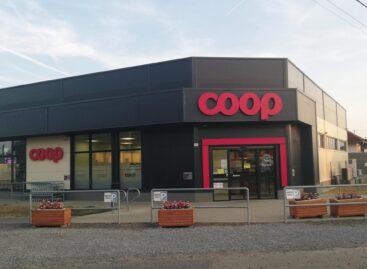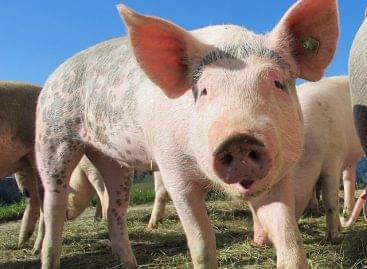An overview of Hungary’s agricultural foreign trade balance
According to data from the latest report by KSH (Central Statistical Office), published on 30 July, Hungary’s agricultural export was EUR 2,143.6 million in the first five months of 2010. In contrast with the 4.3-percent shortfall in the previous month, this export level was only 2.1 percent behind the first five months’ in 2009. The positive change was the result of the good performance in May 2010, when export bettered our export in May 2009 by EUR 30 million. The situation is improving in terms of import as well: the value of import was EUR 1,358.3 million, 5.4 percent lower than in the previous month; in May import fell by EUR 16 million, compared to May 2009.
Our time proportionate agricultural foreign trade balance neared EUR 800 million and was only 4.7 percent lower than in the same period of 2009. Our export structure progressed, as the proportion of unprocessed products diminished and the proportion of processed products grew. Sales revenue from our 780,000-ton wheat export was more than EUR 100 million and the 1.8 million-ton maize export realised EUR 327 million in revenue. In volume, our maize export decreased by 32.6 percent and wheat export fell by 5.6 percent. Livestock and livestock product improved their proportion within export by 2 percentage points; food products, beverages and tobacco products strengthened their positions by 2.4 percentage points in the first five months of 2010.
In the examined period, 82.4 percent of Hungary’s agricultural export went to the European Union, from which 56 percent ended up on the markets of old member states and 44 percent on the markets of new member states. The EU’s share in our import was 93.2 percent (old member states had a 70-percent share and new member states had 30 percent). Examining our main export products in 2009, we can see that 76 percent of our livestock export targeted the EU, just like 79 percent of dairy products, 86.7 percent of beverages, 82 percent of cereals and 93 percent of our sugar export. From both our wheat and corn export 82 percent was bought in the EU; 100 percent of our beef export and 68 percent of our pork export found their buyers in the European Union. It is noteworthy that from our pork export 61 percent went to new member states and only 39 percent to old ones. In value, our agricultural export to the EU-15 only decreased by 3.1 percent, but to the EU-12 it fell by 16.5 percent. As for our 20 most important export markets, a significant restructuring is taking place. The EUR 304.8-million Romanian market surpassed the traditionally leading German one by EUR 55 million.
The European Union and Europe in general is our most important source of import, as 96.4 percent of our import came from the continent and 93.2 percent from the EU’s internal market (old member states’ share was 69 percent). Before Hungary’s accession to the EU in 2004, 24-25 percent of our food import was from third countries – now we buy most of our tropical fruits and soy from EU member states with seaports. In the first five months of 2010 the biggest import growth, 20 percent was realised by Slovakia. Our import from Slovakia is very diverse; Hungary’s milk and dairy product import from Slovakia increased by 26.7 percent, sugar import doubled and beverage import soared by 60 percent. In the context of our national economy, we can see that agricultural export decreased by 2.1 percent, while Hungary’s export in general increased by 19.1 percent.
The reason for this is that the other sectors were hit harder by the crisis in 2009 and with the easing of the recession they recovered faster. On a national level, our import expanded by 16.4 percent – in the food sector it practically remained stable at minus 0.6 percent. Hungary’s economy realised a foreign trade surplus of EUR 2,245.3 million in the first five months, from which the food industry’s share was EUR 785.3 million – 35 percent for a sector that represents a mere 7.9 percent of our total export and the share if which in the GDP, together with the food industry, is 6-7 percent.
Related news
Related news
László Pekó: “Coop isn’t just a network, it is a way of life – and has been for 30 years”
🎧 Hallgasd a cikket: Lejátszás Szünet Folytatás Leállítás Nyelv: Auto…
Read more >Winners of the 2025 Retailer of the Year award announced
🎧 Hallgasd a cikket: Lejátszás Szünet Folytatás Leállítás Nyelv: Auto…
Read more >K&H: significant price drop in the pork market
🎧 Hallgasd a cikket: Lejátszás Szünet Folytatás Leállítás Nyelv: Auto…
Read more >



